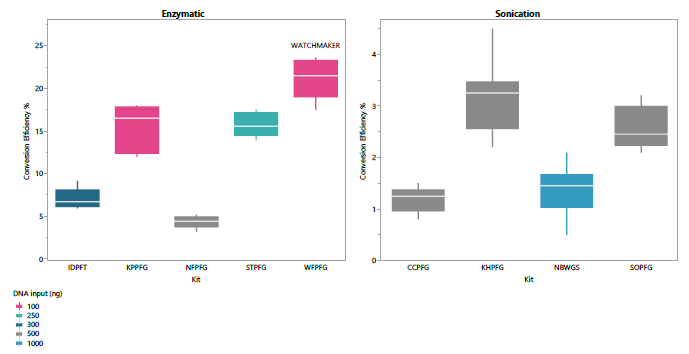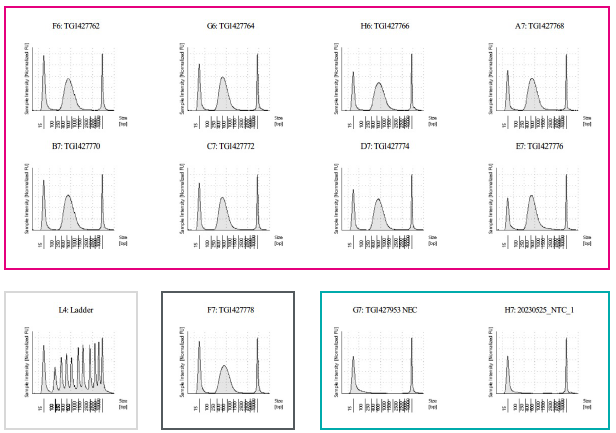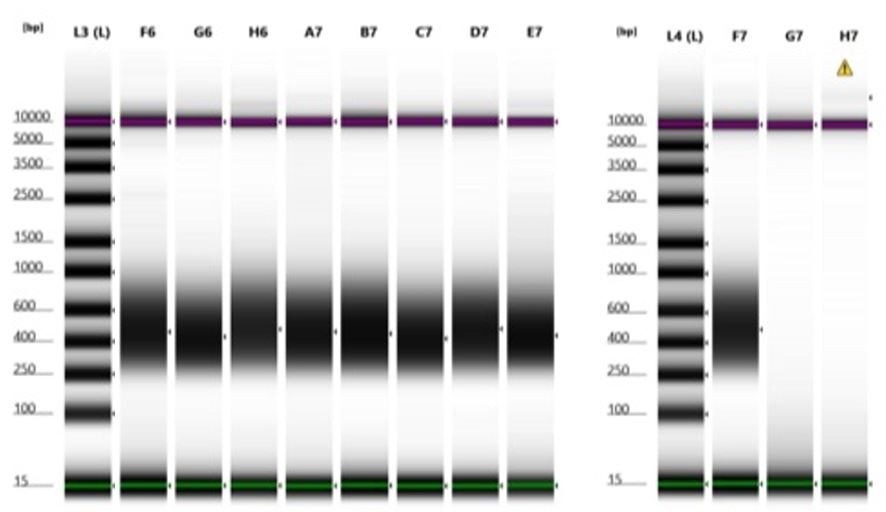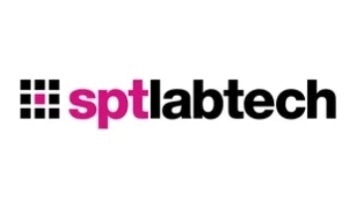With the rapid growth of Next Generation Sequencing (NGS), a strong, automation-friendly library preparation solution is now essential for handling valuable samples across various applications.
Automating the library preparation process offers several advantages, such as increased throughput, reduced performance variability, and the potential elimination of sample-tracking errors. Nevertheless, transitioning from manual workflows to automation can often seem daunting and time-consuming.
This article outlines TGen North’s journey, evaluating multiple library preparation solutions and automation systems. The company’s objective is to shift from its current manual library preparation to an automated workflow using SPT Labtech’s firefly® system in combination with the Watchmaker DNA Library Prep Kit with Fragmentation.
Introduction
TGen North is the home for TGen’s Pathogen and Microbiome Division, located in Flagstaff, Arizona. The HIVE Laboratory at TGen North actively participates in surveillance programs for various pathogens, allowing the state of Arizona to help inform the public as well as provide aid to underserved communities.
The team employs whole genome sequencing to monitor emerging outbreaks and facilitate informed public health responses, overseeing high throughput sample processing, including NGS. This group manages substantial projects at TGen, encompassing specimen accession, extraction, QC, sequencing, and data analysis.
With the critical need for accurate pathogen surveillance, manual library preparation processes have posed challenges, such as monotonous workflows with an increased risk of potential human errors and inconsistencies between lab personnel. Seeking improved efficiency and data quality, this article will explore the transition to automated library preparation workflows.
The shift to automation became possible by first identifying areas for workflow improvement and establishing evaluation criteria for both sample preparation solutions and automation platforms.
The next step was conducting comparative experiments to pinpoint the most robust sample preparation solution and collaborating with the chosen automation provider, SPT Labtech, to automate the preferred library preparation workflow—the Watchmaker DNA Library Prep Kit with Fragmentation.
The subsequent sections will delve into this transition toward automation and its potential to revolutionize NGS workflows, ensuring dependable and reproducible outcomes for more efficient and precise analyses.
Manual processing – Identifying areas for improvement
Automating library preparation can reduce errors and save time for scientists in the laboratory, allowing them to focus on more complex tasks.

Image Credit: SPT Labtech
Time-consuming and error-prone steps
Normalization
- Arranging samples
- Adjusting sample dilution as needed
Library construction
- Bead purification and size selection
- Managing liquid handling discrepancies among scientists
- Handling sample transfers and tracking
Library pooling
- Missed samples and pipetting mistakes
- Uneven sequencing results
Why automate?
- Quick and dependable
- Minimizes the risk of cross-contamination
- Decreases human errors in indexing, pooling, and sample tracking
- Maintains protocol version tracking
- Ensures consistency in library yields
- Provides reliable sequencing outcomes, lowering sequencing expenses
Several automated liquid handling systems from various vendors were evaluated. Ultimately, TGen North selected firefly for the following reasons:
- Cost: It costs approximately half as much as other systems
- Lab footprint: firefly’s vertical design fits on a standard benchtop
- Intuitive software: Cloud-enabled and intuitive
- Support: SPT Labtech’s field application scientists and service engineers offer responsive assistance in developing new protocols
- Flexibility: The system boasts 16 deck positions, a positive displacement non-contact dispenser, dual-core functionality for handling 384, 96, and strip tips, and optional integrated shaker and plate thermal module
- Efficiency: Integrating a positive displacement non-contact dispenser significantly reduces reagent dead volume required for automating library preparation workflows
Determining the appropriate DNA library prep kit to scale
Seven DNA library prep kits were compared using eight independent DNA isolates from GM12878 cells, all processed with the Chemagic Cell Pellet protocol from Revvity, eliminating process variability.
In addition to processing positive controls, negative extraction controls (NEC) and non-template controls (NTC) were handled for each kit, with input quantities following each kit’s recommendations.
Evaluation criteria for whole-genome library preparation
Quality fragmentation enzyme
- Consistent results
- Avoid the need for double-sided selection
- Ligation and conversion efficiency
- Input quantity range
- Ease of protocol
- Time requirements
- Support
- Technical, sales, automation
- Minimal sequencing artifacts and bias
- GC, start-bias

Figure 1. Conversion efficiency comparison. Calculation assumes no sample loss through process. (((qPCR Molarity [pM] / 1x109) x (size [bp] x 660 x volume [uL]) / (input DNA [ng] )) x 100. Image Credit: SPT Labtech

Figure 2. D5000 TS assay for Watchmaker DNA Library Kit with Fragmentation. No additional size selection required. Even sizing and yield across samples (pink), Clean negative controls (teal), Positive control (dark grey), Ladder (light grey). A conversion efficiency for Watchmaker WGS with 4 cycles of PCR amplification and 100 ng of DNA was 70-80% (likely higher, post ligation product is diluted 2x). Conversion efficiency was calculated using Tapestation data as follows: (((Library [ng/uL] x volume [uL]) / (1.65^#PCR cycles)) / Input DNA [ng]) x100. Image Credit: SPT Labtech

Figure 3. Virtual Gel Image of Watchmaker final libraries from 8 independent DNA isolates (F6-E7), ladder (L4), positive control (F7), negative controls (G7-H7). Image Credit: SPT Labtech
The Watchmaker DNA Library Prep Kit with Fragmentation incorporates a robust enzymatic fragmentation module that offers tunable and consistent results (see Figure 2). This is achieved even across different input quantities without the need for additional size selection steps.
Out of the seven kits subjected to testing, the Watchmaker DNA Library Prep Kit with Fragmentation exhibited the highest conversion rates (refer to Figure 1). Additionally, it features a simplified, automation-friendly workflow (see Figure 4) that is compatible with PCR-free options.
The kit also includes adequate overage for automation, and Watchmaker has a knowledgeable scientific support team willing to help as needed.

Figure 4. Watchmaker DNA Library Prep Kit with Fragmentation workflow overview. Image Credit: SPT Labtech
Conclusion
The shift towards automated library preparation using the Watchmaker DNA Library Prep Kit with Fragmentation on firefly has notably enhanced TGen North’s pathogen surveillance workflows.
The Watchmaker kit’s robust enzymatic fragmentation module, coupled with its high conversion rates and user-friendly, automation-compatible workflow, has played a pivotal role in achieving improved efficiency and data quality.
The selected firefly automation system offers cost-effectiveness, space efficiency, user-friendly software, and exceptional support from SPT Labtech’s scientific team.
With enhanced flexibility and reduced reagent wastage, automated library preparation has empowered TGen North to handle precious samples more efficiently, ensuring timely pathogen surveillance and freeing up resources for more intricate tasks within the laboratory.
About SPT Labtech
SPT Labtech designs and manufactures robust, reliable and easy-to-use solutions for life science. We enable life scientists through collaboration, deep application knowledge, and leading engineering to accelerate research and make a difference together. We offer a portfolio of products within sample management, liquid handling, and multiplexed detection that minimize assay volumes, reduce material handling costs and put the discovery tools back in the hands of the scientist.
At the Heart of What We Do
Many of our innovations have been born out of the desire to create solutions to existing customer problems; and it’s this ethos that drives SPT Labtech’s R&D efforts. Our strengths come from the trust our customers have with us to develop truly unique, automated technologies to meet their needs. We combine cutting edge science with first-rate engineering to put customers at the heart of everything we do.
A Problem-Solving State of Mind
The substantial breadth of expertise within our company enables us to be involved in the full life cycle of our products from the initial design concept, mechanical and software engineering and prototyping, to final manufacture and sale. These qualities allow us to offer the best possible technical and mechanical support to all the equipment that we supply, hence maintaining excellent client relationships.
Sponsored Content Policy: News-Medical.net publishes articles and related content that may be derived from sources where we have existing commercial relationships, provided such content adds value to the core editorial ethos of News-Medical.Net which is to educate and inform site visitors interested in medical research, science, medical devices and treatments.